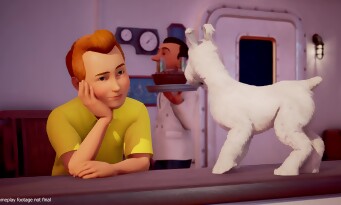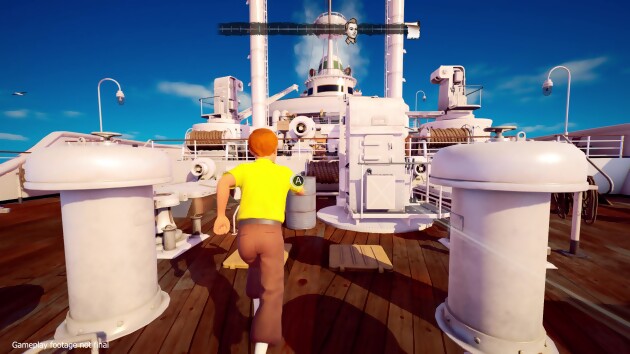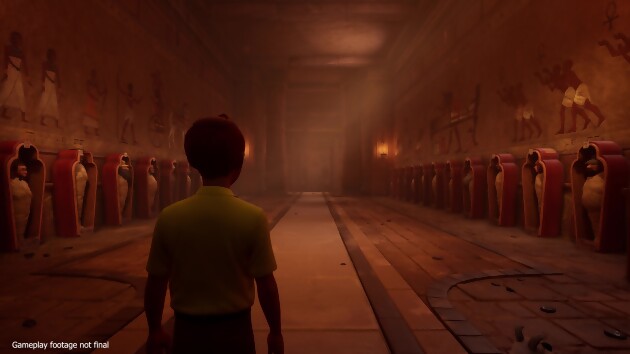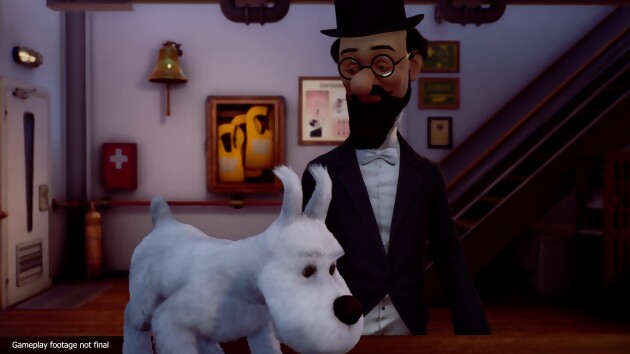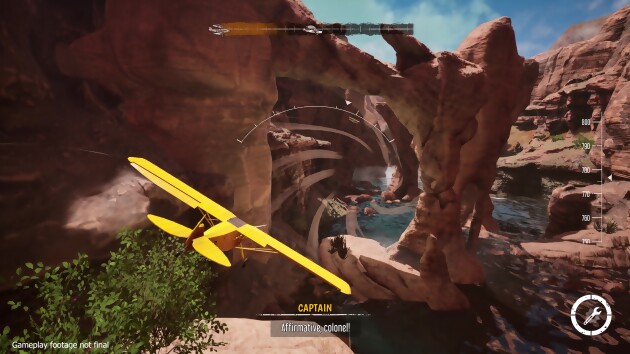The last time we saw Tintin in a video game was a dozen years ago, in 2011, when Steven Spielberg’s film: The Secret of the Unicorn was released. An adaptation published and developed by Ubisoft, but with a rather deplorable result. With an average of 53% on Metacritic, the game was castigated – rightly – by the specialized press, which was delighted to note that Ubisoft had managed the project over the leg. Graphics, gameplay and playability, nothing was right in this game, and above all, it was quite unworthy of what the French studio was capable of. We can imagine the disappointment at Moulinsart at the time, who probably did not expect such a knockdown, they who are nevertheless very keen on the smallest detail, but who nevertheless let a dubious modeling of Tintin pass. No wonder the rights holders took time to let their hero return to the video game. After years of talks, Tintinimaginatio (formerly Moulinsart) was convinced by Microids and the Pendulo studios to bring back one of the greatest adventurers of Belgian comics. Probably because the ambitions are greater and somewhere, there are desires to make this license the Uncharted in France? We’re exaggerating a bit…
Among Microids’ very big projects, there is obviously Goldorak, Flashback 2, Cobra (of which we don’t know anything yet) and the great return of Tintin. To convince TintinImaginatio to trust them, the French publisher called on the Spanish studio Pendulo Studios, leading point & click specialists with whom they have already made Blacksad or even the recent Vertigo, freely adapted from the work of Alfred Hitcock. We obviously owe them the great Runaway series, and a little admission, we wouldn’t spit on the return of this license with which we had a good time ten years ago. In the meantime, it is on the Tintin project that the Spanish developers have been working for the past two years, with this desire to adapt the comic strip Les Cigares du Pharaon. A choice that was made by mutual agreement between TintinImaginatio and Microids, considering that this is a key episode for several reasons.
The first is for the variety of its environments, since Tintin visits several countries, and that, for a video game, is a real godsend to offer different settings. Then, it is also in The Cigars of the Pharaoh that Tintin meets the major protagonists. Dupont and Dupond of course, but also Roberto Rastapopoulos, who will become one of our reporter’s main enemies. It is also in this comic strip that Tintin reveals himself to be the investigative journalist who will give meaning to his adventures and make him the adventurous character we know. Finally, we also recall that Les Cigares du Pharaon forms a diptych with Le Lotus Bleu, which is its sequel and whose development is already underway, a statement relayed by Stéphane Longeard, CEO of Microids, who also revealed that the amount of production of the Cigars of the Pharaoh game was around 7 million euros. To convince us that this co-production between Microids and TintinImaginatio can make sparks, the French publisher invited us to an event to test the game on three different levels. The opportunity to have a good overview of the possibilities of gameplay which is inspired by several well-known genres of video games.
“GO HOP, LET’S GO, ON THE ROAD FOR ADVENTURE…”
The first sequence takes place on the liner MS Époméo where Tintin crosses paths with Philémon Siclone who is trying to catch up with a piece of paper. In the comics, this scene takes up only 8 squares, but in the video game, it has obviously been lengthened to give more consistency and expand the possibilities. Microids and Pendulo Studios have opted for a chase sequence with this flying paper based on Quick Time Events (QTE) which obviously recalls the productions of Quantic Dream. Like David Cage’s games, you have to perform manipulations on the controller in the right timing to successfully overcome obstacles. Pressing the right button at the right time, having fun with the analog sticks, the time when QTEs were more or less banned from video games, there is indeed a nostalgic side to rediscovering this somewhat old school gameplay.
For Microids, offering such playability makes it possible to set the atmosphere of the game, to remember that the game is above all intended for the general public, with a child / family target who does not hide it, but also to show the visual capacities of the title. And it is true that immediately, the game surprises with its graphics, quite neat it must be admitted in especially in the tone of the comic strip. So certainly, Tintin displays a rounder face and really gives the impression of showing his age (that is to say 15 years), much more than in comics elsewhere, but also to say to himself that the engine that Pendulo uses for each of its games works quite well. Visually, it’s quite attractive, whether it’s the characters or the scenery, even if the modeling of Snowy lacks noticeably nuance, especially in terms of his hair, which is actually a bunch of textures that are a bit cheap.
CHARMING, SEDUCTIVE, BUT MINOR
The second sequence takes place several chapters after the opening scene, when Tintin discovers sarcophagi where all the people who have approached the affair of the tomb of Kih-Oskh a little too closely reside. .. We then find ourselves with a gameplay reminiscent of Pendulo games, with this need to meticulously observe each object and corner of the decor to find the solution to the imposed puzzle. Each clue must be combed through in order to understand that it is then necessary to reproduce the diagram on the wall with real statues, and thus open a secret passage. If we find the plot of the comic strip, these sequences also echo the famous cartoon that we watched on France 3 when we were younger, with these moments when Tintin keeps talking to himself to involve the viewer, and here accordingly the player. The staging works, the puzzles are not too convoluted, the general public should also join.
As for the third and last sequence, it is an even different passage, since we find ourselves at the controls of a small passenger plane. As in the comics, Tintin tries to escape from thugs in Saudi Arabia and again, two pages of action, we end up with a more in-depth sequence. It’s very interventionist, with only one path to follow and obstacles to avoid, but it once again highlights the very neat visual rendering of the game, with effects that add to the intensity of the action. Be careful not to say what we haven’t said, as it’s overall pretty basic in gameplay, but the execution is pretty well done.
